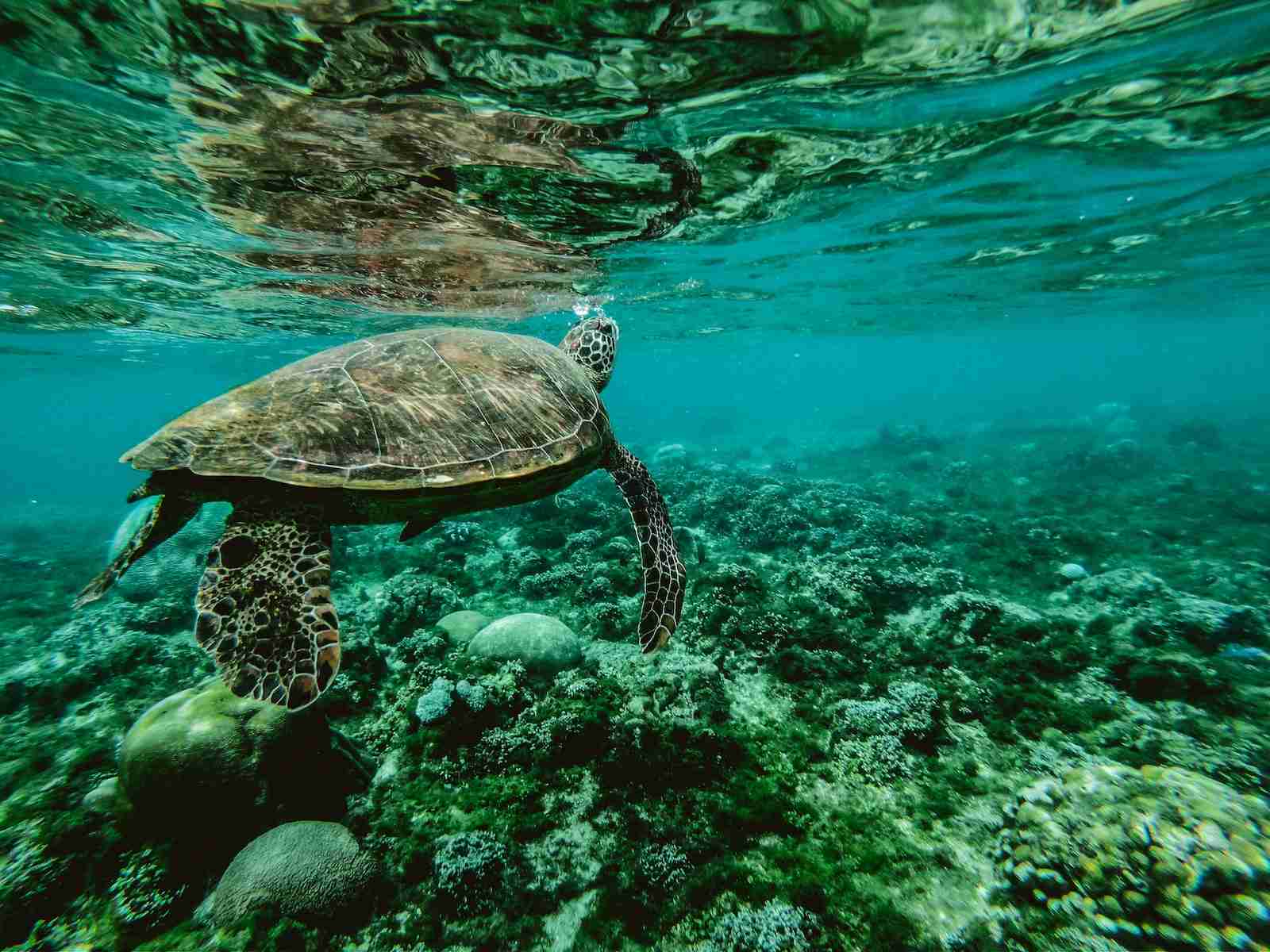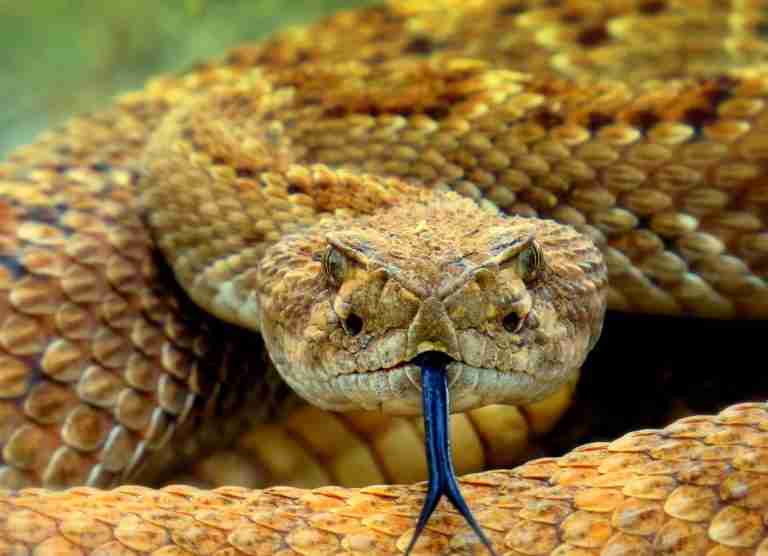23 Fun Facts About Turtles To Bring A Smile To Your Shell
1. Turtles are ancient creatures dating back over 200 million years.
Turtles have gracefully adapted to various environments from prehistoric times to the present, showcasing their resilience and survival skills.
Their ancient lineage is a testament to their ability to withstand the test of time and thrive amidst changing landscapes.
The oldest known turtle fossil was found in China and is estimated to be 220 million years old. This makes them one of the oldest reptile groups in the world, even older than snakes, crocodiles, and alligators.
2. A turtle’s shell acts as both armor and a bony shield.
The shell of a turtle is a remarkable adaptation that serves as a dual-purpose defense mechanism.
This ingenious design allows turtles to retract their vulnerable body parts within the safety of their shells, shielding themselves from potential threats.
It is made up of over 50 bones, including the turtle’s rib cage and spine. The shell is covered in a layer of keratin, the same material that makes up our hair and nails.
3. Only some species, like the box turtle can retract their heads.
This is done by pulling the head back into the shell and closing the hinged plastron. The box turtle is the only turtle that can completely close its shell, making it very difficult for predators to attack.
Surprisingly, not all turtles possess the remarkable ability to retract their heads into their shells.
Those turtles without this mechanism, rely on alternative strategies to protect themselves from predators, including finding secure hiding spots or utilizing their strong limbs and quick reflexes to escape potential danger.
4. Turtles are cold-blooded animals.
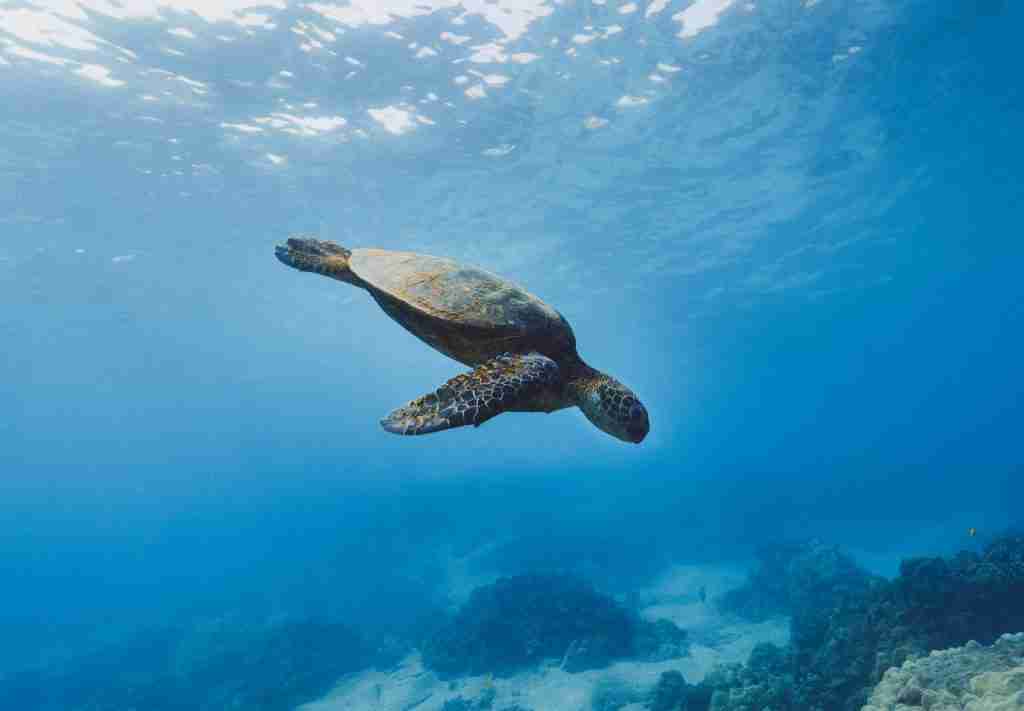
Turtles belong to the ectotherms category, meaning the surrounding environment influences their body temperature. Unlike warm-blooded creatures, turtles cannot internally regulate their body heat.
Instead, they bask in the sun or seek shade to adjust their temperature as needed.
This adaptation allows them to conserve energy and thrive in a wide range of habitats, from tropical beaches to temperate forests.
5. Sea turtles are skilled navigators guided by Earth’s magnetic fields.
Sea turtles cover thousands of miles across vast ocean expanses. These journeys are even more astonishing because sea turtles rely on the Earth’s magnetic fields as their compass, guiding them through the open waters.
This innate sense of direction allows them to return to the same nesting beaches where they were born, ensuring the continuation of their species.
Sea turtles also have a keen sense of smell, which they use to find food and mates.
6. One of the fun facts about Turtles is that the leatherback sea turtle is the largest turtle species.
These magnificent creatures can weigh an astonishing 2,000 pounds (900 kilograms), making them a true marvel of nature.
Their massive size doesn’t hinder their oceanic agility; they are adept swimmers capable of diving to impressive depths in search of their preferred prey, jellyfish.
Leatherback sea turtles are found in all oceans except the Arctic and Antarctic. They are the only sea turtle that does not have a hard shell. Instead, their shell is made of leathery skin and bone plates.
7. Contrary to popular belief, not all turtles live in water.
Contrary to popular belief, not all turtles live in water. There are many species of turtles that live on land, such as tortoises and box turtles.
The desert tortoise has evolved specific physiological and behavioral adaptations to withstand harsh desert conditions.
These resilient creatures can conserve water, dig burrows for shelter, and endure extreme temperatures, showcasing their ability to flourish in scarce water.
8. Giant tortoises can live for more than 150 years.
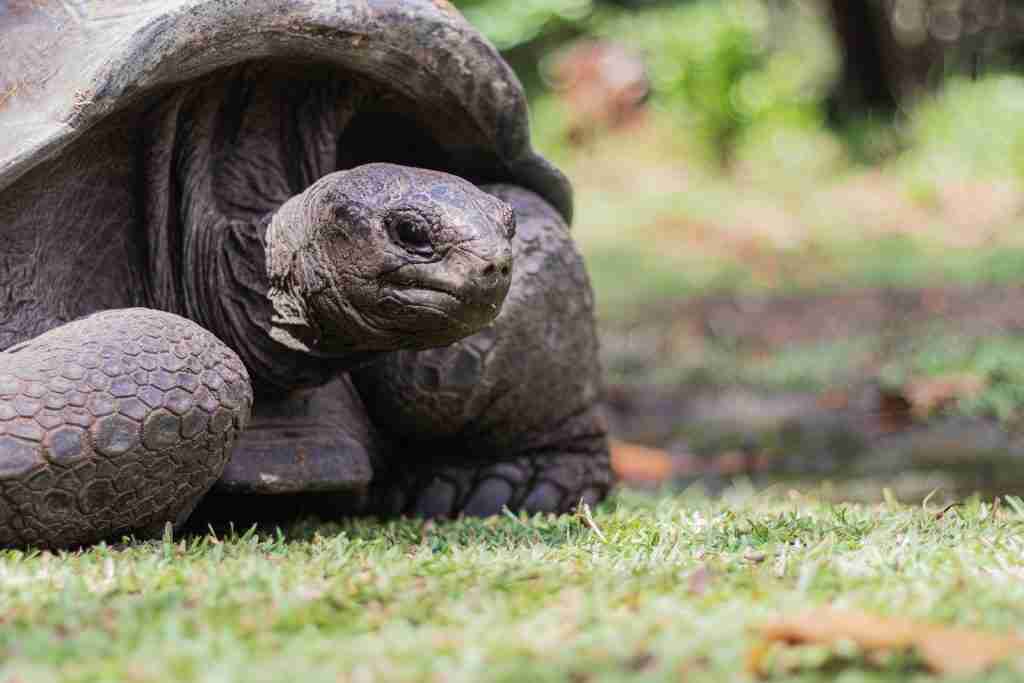
Turtles are living testaments to the concept of longevity, with some species boasting remarkable lifespans. Giant tortoises outlive many other animals, and their lives become a living timeline, witnessing generations come and go.
The oldest known giant tortoise was a Seychelles giant tortoise named Jonathan, who died in 2022 at the age of 190. Giant tortoises are found on islands in the Indian and Pacific Oceans.
They are herbivores and eat a variety of plants, including grasses, leaves, and fruits.
9. The sex of turtle hatchlings is determined by the temperature at which the eggs are incubated.
In a unique phenomenon known as temperature-dependent sex determination (TSD), warmer temperatures during egg incubation generally lead to the emergence of female hatchlings, while cooler temperatures tend to result in male hatchlings.
This intriguing adaptation allows turtles to adjust their population ratios according to environmental conditions.
If the eggs are incubated at a temperature of 82-86 degrees Fahrenheit, the hatchlings will be male. If the eggs are incubated at a temperature of 78-82 degrees Fahrenheit, the hatchlings will be female.
10. Turtles can detect scents both underwater and in the air.
Turtles possess a remarkable sense of smell that extends beyond their aquatic habitat. Whether underwater or in the air, these reptiles have a keen olfactory system that allows them to detect scents with impressive accuracy.
Their acute sense of smell aids in locating food, identifying potential mates, and avoiding predators.
Turtles have a Jacobson’s organ, which is a special organ in the roof of their mouth that helps them to smell.
11. The loggerhead turtle has one of the most powerful jaws among turtles.
Their robust jaws and strong bite force enable them to effortlessly consume hard-shelled organisms, crustaceans, and mollusks.
This impressive adaptation showcases the loggerhead’s remarkable hunting prowess and highlights the intricate interplay between predator and prey in marine ecosystems.
Loggerhead turtles are found in all oceans except the Arctic and Antarctic. They are omnivores and eat a variety of animals, including fish, squid, and jellyfish.
12. Turtle species use their strong front limbs to propel through the water.
Turtles exhibit remarkable swimming abilities, with many species excelling in aquatic environments.
Their synchronized movements allow them to navigate various water bodies, from oceans and rivers to ponds and marshes, with remarkable precision.
The front limbs of turtles are typically flipper-like, but some species, such as tortoises, have feet with claws. They also use their front limbs to dig nests and grasp food.
13. Turtles can be surprisingly agile on land.
Though often associated with slow and deliberate movements, turtles can display remarkable agility on land, defying their slow and steady reputation.
Their sturdy legs and steady determination allow them to traverse various terrains with surprising efficiency.
Some turtles can even climb trees! This is because turtles have strong limbs and flexible shells.
14. Archerfish-hunting turtle shoots water at insects causing them to fall into the water.
The archerfish-hunting turtle is a species of freshwater turtle that can shoot water at insects to knock them into the water.
The archerfish-hunting turtle is a master of precision and strategy. This clever reptile positions itself below overhanging branches and shoots jets of water at unsuspecting insects perched above.
The forceful stream dislodges the insects, causing them to fall into the water, where the patient turtle eagerly awaits its meal.
This unique adaptation allows the turtle to catch prey that would otherwise be out of reach.
15. The sea turtle returns to the same beach where it was born to lay its eggs.
Sea turtles, among the most iconic of all turtles, possess an extraordinary navigational instinct that is nothing short of awe-inspiring.
After migrating thousands of miles across vast ocean expanses, these magnificent creatures display an incredible homing ability. When it’s time to lay their eggs, female sea turtles return to the exact beach where they were born.
Guided by an innate sense of direction, they navigate through open waters with precision, ensuring the continuation of their species by carefully selecting familiar and suitable nesting grounds.
16. Turtles are omnivorous creatures.

Turtles have a diverse diet, showcasing their adaptability to a variety of habitats. These versatile reptiles enjoy a menu that includes various options, such as plants, fruits, and insects, providing them with essential nutrients and energy.
Turtles also have a penchant for small fish and crustaceans, demonstrating their adeptness as opportunistic predators. Surprisingly, some turtle species, like the leatherback sea turtle, have a unique preference for jellyfish, consuming them in significant quantities.
17. Some turtle species hibernate during colder months.
These resourceful reptiles bury themselves in mud or sand to shield themselves from the extreme cold, creating a protective cocoon-like environment.
By entering a state of reduced metabolism and minimal activity, they conserve energy and remain dormant until warmer temperatures return.
Hibernation is a survival strategy that highlights the turtles’ ability to adjust their metabolism and behaviors in response to changing environmental conditions.
18. The alligator snapping turtle has a specialized tongue that lures prey.
The alligator snapping turtle has a specialized tongue that lures prey. The tongue is forked and has a worm-like appearance.
The turtle will extend its tongue out of its mouth and wiggle it around, attracting fish and other small animals. When the prey gets close enough, the turtle snaps its jaws shut, trapping the prey.
19. Turtles can absorb oxygen through their skin while underwater.
Turtles exhibit a remarkable adaptation that enables them to remain submerged for extended periods underwater.
This unique ability serves as a crucial survival mechanism, especially for species that spend considerable time in aquatic environments.
20. Some turtle species can produce tears.
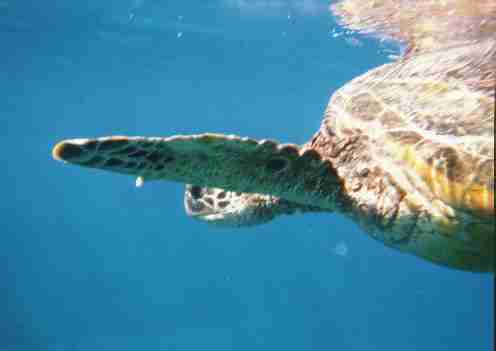
Turtles, like many other animals, have the surprising ability to produce tears, a behavior more commonly observed when they are out of water or experiencing stress.
While tears in turtles might not signify emotional distress as they do in humans, this adaptation serves essential purposes for their well-being. Tears help keep their eyes lubricated, protected, and debris-free, enhancing their vision and overall health.
These tears are produced by the tear glands, which are located near the eyes. In some turtle species, tears are also produced as a way to remove salt from the eyes.
21. The intricate patterns on a turtle’s shell are unique to each individual.
The intricate patterns on a turtle’s shell are unique to each individual. This is because the patterns are formed by the way the scutes, or plates, of the shell are arranged. The scutes are made of keratin, the same material that makes up our hair and nails.
Scientists can use these patterns to study and track individual turtles in the wild, aiding in conservation efforts and population monitoring.
22. Turtles dig burrows and tunnels for protection, which is one of the fun facts about Turtles.
Their adeptness at burrowing allows them to retreat to safety when threatened, ensuring their survival in various habitats.
This resourceful behavior highlights the adaptability of turtles and their innate ability to create secure sanctuaries amid the ever-changing natural world.
23. Turtles symbolize longevity, wisdom, and stability in many cultures.
Turlte’s long lifespan and slow, steady pace are often associated with the idea of longevity and endurance.
The deliberate and thoughtful movements of turtles have been linked to wisdom and prudence in decision-making.
Furthermore, their ability to carry their homes on their backs symbolizes stability and adaptability, inspiring a sense of security and groundedness.
The average lifespan of a turtle is 30-50 years, but some species can live for over 100 years. The oldest known turtle was a Galapagos tortoise named Harriet, who lived to be 175 years old.
The largest turtle is the leatherback sea turtle, which can weigh up to 2,000 pounds and measure up to 8 feet long. Leatherback sea turtles are found in tropical and subtropical oceans around the world.
The smallest turtle is the speckled padloper tortoise, which is only about 2 inches long and weighs about 2 ounces. Speckled padloper tortoises are found in South Africa.
Yes, some turtles can breathe through their butts. This is called cloacal respiration, and it is a way for turtles to get oxygen when they are underwater.
Turtles’ favorite food depends on the species of turtle. Some turtles are carnivores, while others are herbivores or omnivores. Some of the most common foods that turtles eat include insects, worms, fish, plants, and fruit.

